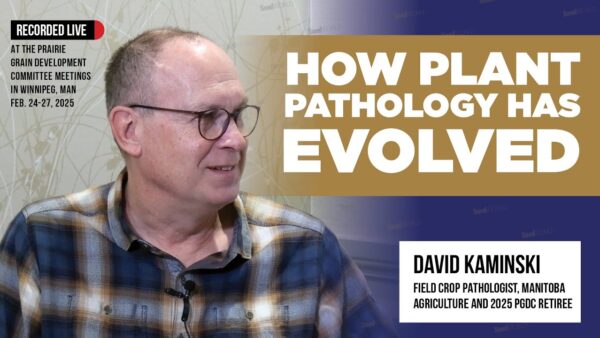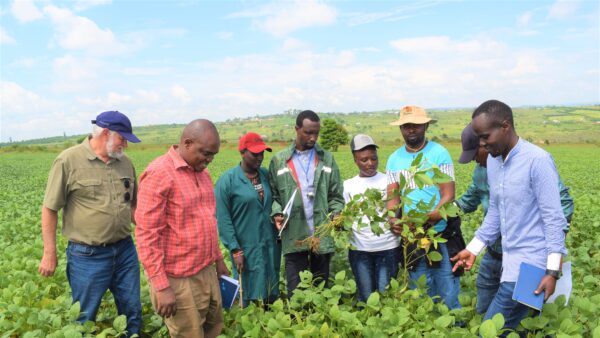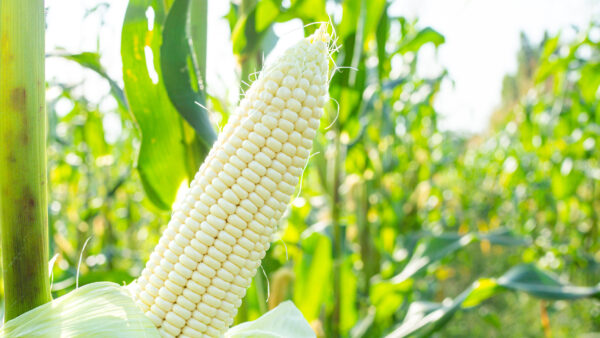Note: This column is the second in a four-part series.
The information revolution has begun its transformation of agriculture, but are we on the verge of something much bigger, the artificial intelligence (AI) revolution? Certainly all the elements needed to bring advanced AI to agriculture exist, but to achieve the full benefit they must be put together correctly.
Data collection systems track and process information as crops make their way from bags of seed to the fields and ultimately to the supermarket. Each link in the value chain can be closely examined as it makes its way through the process. The sheer number of measurements, test results and real-time parameters gathered by the hour and by the minute far exceed any single person’s ability to comprehend it all.
That’s where data analytics plays a role, absorbing all of this information and making sense of it with an output better matched to human understanding. This might take the form of a digital map that uses red highlights to mark problem areas. Or, the output could be a graph tracking market trends over time.
AI systems take information processing to the next level. Wouldn’t it be valuable to assess real-time data from the fields and compare and contrast various scenarios to better understand what’s happening at all levels of the global marketplace? Such capabilities take advantage of machine learning to interpret rapidly changing circumstances on a local, regional and even global scale.
Currently, a commodity trader interested in what’s going on in the United States has to wait for the agriculture department to release the latest figures for various crops and related regional information. While these reports are reliable, the data comes from surveys that, in some cases, are filled out on paper and mailed in — not exactly timely.
Instead of looking at what happened in the past, the AI alternative would give commodity traders a firmer foundation upon which to look ahead. For instance, he might see at a glance that a massive storm threatens to bring severe losses to the corn and soybean crops in Iowa. An AI-powered analysis would convey the percentage chance of the storm becoming a serious problem along with the impact on commodity prices for each likely scenario.
As we all know, forecasting the weather is a dubious undertaking, especially long-range forecasting. The storm threat might be overblown. AI would work through every conceivable scenario, covering millions of possibilities — more than any single person could imagine. AI would account for potential damage to fields, the impact on each farmer’s pocketbook, the effects on the region’s transportation network and every other relevant factor. It would run through the scenarios at each level of severity and calculate the impact on international trade and the stockpiles of the affected crops on a national scale, as well as the bottom line for small farmers on an individual scale.
Commodity traders could decide whether to buy or sell those commodities with a firm, fact-based grasp of the rapidly evolving situation. A soup company that depends on the supply of corn from Iowa might line up an alternative source and be prepared in the event there is a disruption. Growers, of course, have the same interest in timely and accurate information on commodity price trends. The net result is fewer nasty surprises and fewer disruptions in the supply chain.
Such an agricultural AI system remains a thought experiment for the moment. The information revolution has made a real-time agricultural data system possible in theory, but it doesn’t yet exist in reality because agricultural information systems remain fragmented. Stakeholders need to see the value of access to coordinated, timely and accurate information before the situation improves.
Data analytics have demonstrated their ability to improve agricultural processes in a big way. Plant breeders use analytics to enhance plant genetics using fewer trials than old-fashioned trial-and-error methods. The field of logistics wouldn’t be what it is today without data analytics.
AI takes these advances to the next level, but the hottest research is limited to the fields of computer science, medicine, neurology, linguistics and game playing — not agriculture. In fact, the latest AI projects aim to replicate human learning processes, interacting with the human brain in a way that augments, rather than replaces, human capabilities. Last year, Google’s DeepMind grabbed headlines by beating the world’s best Go player, one-upping IBM’s famous 1997 victory over a chess grandmaster with Deep Blue.
There’s a case to be made for pushing AI research into agriculture. Surely ensuring the 2 billion extra people have enough food to eat in the decades ahead is as important as a cause as harnessing the power of AI for medical diagnosis and disease research. Yet the development of AI in agriculture is nowhere near as advanced as it is in other sectors.
It’s time to develop the pieces needed for the AI of the future to become a reality. That means building the research foundation and developing the data collection systems and infrastructure.













